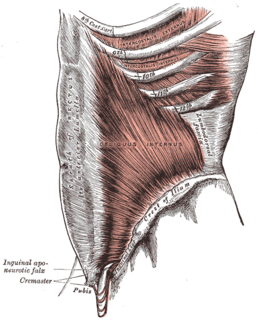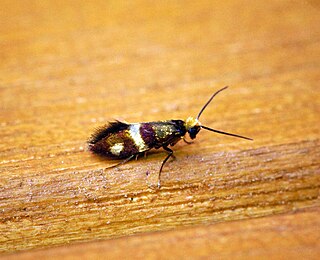| Aureopterix micans | |
|---|---|
| Scientific classification | |
| Kingdom: | |
| Phylum: | |
| Class: | |
| Order: | |
| Family: | |
| Genus: | |
| Species: | A. micans |
| Binomial name | |
| Aureopterix micans Gibbs, 2010 | |
Aureopterix micans is a moth of the family Micropterigidae. It is known from dense rainforest throughout New Caledonia from Mount Panié to the Rivière Bleue. [1]

Moths comprise a group of insects related to butterflies, belonging to the order Lepidoptera. Most lepidopterans are moths, and there are thought to be approximately 160,000 species of moth, many of which have yet to be described. Most species of moth are nocturnal, but there are also crepuscular and diurnal species.

Micropterigoidea is the superfamily of "mandibulate archaic moths", all placed in the single family Micropterigidae, containing currently about 20 living genera. They are considered the most primitive extant lineage of Lepidoptera.

New Caledonia is a special collectivity of France in the southwest Pacific Ocean, located to the south of Vanuatu, about 1,210 km (750 mi) east of Australia and 20,000 km (12,000 mi) from Metropolitan France. The archipelago, part of the Melanesia subregion, includes the main island of Grande Terre, the Loyalty Islands, the Chesterfield Islands, the Belep archipelago, the Isle of Pines, and a few remote islets. The Chesterfield Islands are in the Coral Sea. Locals refer to Grande Terre as Le Caillou.
Contents
Adults have been found between mid-October and the end of January.
The forewing length is 2.7 millimetres (0.11 in) for males and 3.2 millimetres (0.13 in) for females. The forewing ground colour is pale shining silvery ochreous, with rich bronzy brown fasciae, more clearly marked in the female than in the male. There are a few brown scales on the costa at the base, with a line of brown scales along the costa to an interrupted basal line running obliquely inwards and consisting of a costal patch at one-fifth, a small spot in the middle and a larger patch toward the jugal area. There is a strong, continuous, slightly oblique transverse line at mid-length, slightly concave along its inner margin and expanding a little at each end. There is also an area of brown scales in the apex, it is darkest along the costa and grading to paler bronze on the termen and at the apex. The fringes are long and pale silvery ochreous grading to pale bronzy brown along the anal curvature in the female, with zones of brown scales marking the fascia on the costa. The hindwing is very pale bronzy brown. The fringes are bronzy brown.

A fascia is a band or sheet of connective tissue, primarily collagen, beneath the skin that attaches, stabilizes, encloses, and separates muscles and other internal organs. Fascia is classified by layer, as superficial fascia, deep fascia, and visceral or parietal fascia, or by its function and anatomical location.

